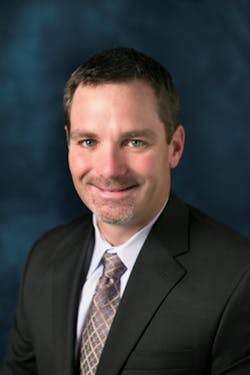For the November/December issue of Healthcare Informatics, Senior Editor Gabriel Perna is exploring how proactive healthcare organizations have gone after data security threats with emerging technology.
In this preview extra of the article, he digs deeper into one specific technology, secure mobile texting. Two leading provider organizations, coincidentally located only miles apart in Lubbock, Texas, Covenant Medical Group (CMG), a nonprofit medical group comprised of 182 physician; and UMC Health, an integrated, 450-bed teaching hospital to Texas Tech University, are leading the way in allowing practitioners to text each other securely for instantaneous care coordination.
In the realm of healthcare information technology, texting is still a bit of an enigma.
Sure, there are those clinicians who love it, use it daily, and couldn’t imagine life without it. But there are others who remain leery. Philip Bierdz, infrastructure manager at Riverside Medical Center, a 336-bed hospital in Kankakee, Ill. that has expressed interest in mobile texting technology, explains that it’s hard to control protected health information (PHI) in this environment.
“That’s a very difficult area for IT organizations to get their arms around, because text messaging goes through different end-point mediums. Doctors have their own phones. Hospitals sometimes provide their own phones to end-users. People have their own personal phones,” Bierdz says. “You meet someone in the hallway, you get their contact information, and I could be sending text messages to someone.”
Jared Rhoads, a senior research specialist with the Falls Church, Va.-based CSC’s Global Institute for Emerging Healthcare Practices, explains that healthcare organizations have found themselves in a tricky place. They don’t want to squash the enthusiasm for mobile in healthcare, but security is a major concern.
UMC Health
In Lubbock, Texas, UMC Health and Covenant Medical Group (CMG), located just a few miles apart, have both employed strategies to allow physicians and other clinicians to text each other in a care setting. At UMC Health, leadership decided that its old pager model wasn’t getting it done, says Chris Akeroyd, director of IT infrastructure. In addition, the physicians wanted the ability to send texts, he adds.
Chris Akeroyd
These two elements were vital from the get-go, as UMC installed a secure mobile text messaging app (from the Lexington, Mass.-based Imprivata) within the hospital. “We have administration’s backing on the product and physicians are starting to accept the technology. It’s starting to become a pretty widely popular app,” Akeroyd says.
In the past, nurses would typically have to page the physician and wait for the phone call. Through this Healthcare Insurance Portability and Accountability Act (HIPAA) compliant app, unit coordinators can send a message on both a phone and web console directly to a particular physician and get an immediate response.
“We’re seeing an increase in provider to provider conversations,” says Akeroyd. UMC is planning to collaborate with Texas Tech Health Sciences Center, to blend the two directories and allow for inter-organizational texting among people who need it.
In addition to that collaboration, Akeroyd says UMC Health is working with the organization’s trauma and burn department on a text messaging referral pilot. As the only burn center in the region, UMC Health often takes admits from as far away as El Paso, Texas. Often, the burn doesn’t end up being serious enough to have needed treatment at UMC.
“What the secure text product will allow the remote physician, not necessarily affiliated with our organization, to do is send photos of the wounds and burns securely. Our trauma department can review and either accept them or refer them to a more local physician. It can save a lot of money and difficulty, if the families don’t need to go that far,” Akeroyd says.
Covenant Medical Group
Elsewhere in Lubbock, Covenant Medical Group (CMG) has seen similar success after adopting a comprehensive unified communications platform across the enterprise (from the Knoxville, Tenn.-based PerfectServe). Like at UMC, Seth Crouch, CMG’s director of ambulatory services, says the investment came from practitioners’ interest and use of text messaging to each other.
According to Crouch, most were using their own devices, over their traditional cell phone networks, not realizing that it was probably not appropriate, he says. The organization had seen entities fined by the government because of texting.
The app from PerfectServe can be used on both mobile and desktop devices. Practitioners who want to text give their name and phone number to the IT team. CMG keeps a registry, which allows them to sort the different people who will be sending PHI of a particular patient. If someone wants to use it, there is a simple sign in function, a pass code, and it works like a typical text messaging application.
Quite simply, physicians love it. “They’ve embraced it more than I could possibly imagine,” says Crouch. “Ninety-five percent of the doctors in our group have it on their phone.” Thanks to worth of mouth, interest in the app spread like wild fire, he adds.
“I rolled it out to 40-50 [physicians] in the pilot, the next thing you know I had another 40-50 in a month, and almost the rest of the medical group in another month or so. It was word-of-mouth, another doctor would tell them, ‘You need to get on this.’ They just peer-pressured the others to get on it.”
Crouch’s goal is to expand use of the app beyond CMG. Pointing out the fact there are other healthcare providers in the area, including (but not specifically mentioning) UMC, he envisions a world where everyone is on the same platform. This kind of secure texting could expedite care coordination across different organizations, he says.



